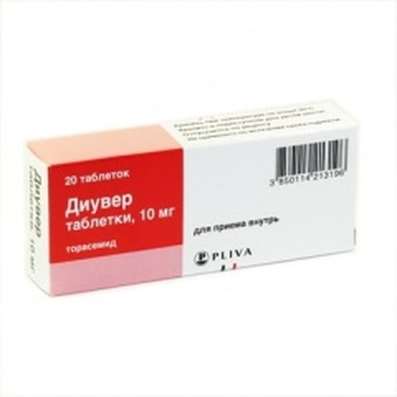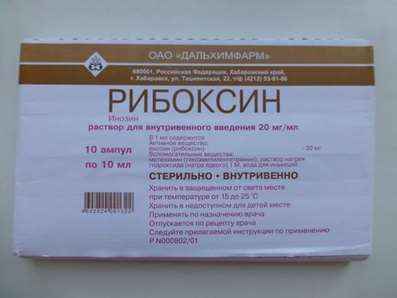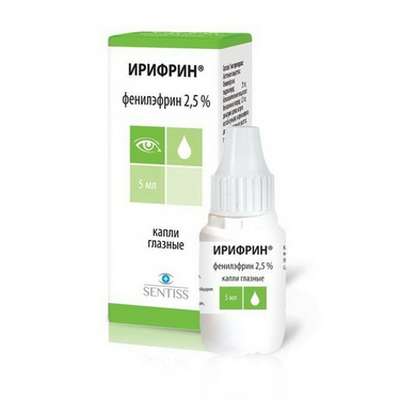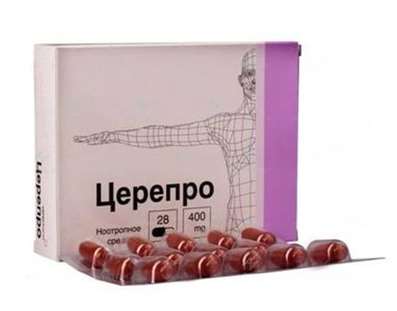Instruction for use: Tolperisone (Tolperisonum)
I want this, give me price
chemical name
2-Methyl-1- (4-methylphenyl) -3- (1-piperidinyl) -1-propanol (as hydrochloride)
Pharmacological group
n Cholinolytics (muscle relaxants)
The nosological classification (ICD-10)
G04 Encephalitis, myelitis and encephalomyelitis
Disseminated acute encephalomyelitis, Leukoencephalitis, Meningomielitis, Myelitis, Acute encephalitis, Acute encephalomyelitis, Chronic encephalitis, Chronic encephalomyelitis, Encephalitis, Encephalomyelitis, Inflammation of meninges
G24 Dystonia
Violation of muscle tone
G24.8.0 * Muscle hypertonicity
Increased muscle tone, The spasm of the striated muscles due to organic diseases of the CNS, muscle Spasticity, Painful muscle spasms in spinal diseases, Increased skeletal muscle tone
G25.9 Extrapyramidal and movement disorder, unspecified: bradykinesia; Restlessness; Movement disorders; Meiji syndrome; Muscle rigidity Muscle spasticity; Muscle tension; Pyramidal disorder; The defeat of the pyramidal tract; The rigidity of the muscles; Extrapyramidal syndrome; Spastic paralysis; Extrapyramidal hyperkinesia.
G35 Multiple sclerosis
Disseminated sclerosis, multiple sclerosis, Relapsing Multiple Sclerosis, Secondary progressive multiple sclerosis, Exacerbation of multiple sclerosis, Mixed forms of multiple sclerosis
G80 Cerebral Palsy
Cerebral paralysis, Children's cerebral palsy
G80.0 Spastic Cerebral Palsy
Little's disease, Spastic Pallas, Little disease
G93.4 Unspecified encephalopathy
Bilirubin encephalopathy, Lacunar status, Tremor in portal-systemic encephalopathy, Latent hepatic encephalopathy, Atherosclerotic encephalopathy, Hypertonic encephalopathy, Hypoxic encephalopathy, Dysmetabolic encephalopathy, Encephalopathy,Defeat of the brain, Porto-caval encephalopathy, Vascular encephalopathy, Traumatic encephalopathy, Encephalopathy, Encephalopathy of secondary origin, Encephalopathy dyscirculatory, Encephalopathy portocaval, Epileptic encephalopathy, Syndrome of hemorrhagic shock and encephalopathy, Subacute spongiform encephalopathy
G99.2 Myelopathy in diseases classified elsewhere
Myelopathy, Chronic myelopathy
I64 Stroke, not specified as hemorrhage or infarction
Primary stroke, Stroke, Stroke in the course of, microstroke, stroke, The completed stroke
I70.2 Atherosclerosis of the arteries of the extremities
Arteriosclerosis obliterans, Arteriosclerosis of peripheral arteries, Atherosclerosis of lower limb arteries, Atherosclerosis of peripheral arteries, Atherosclerosis of the vessels of the extremities, Obliterating disease of lower extremities, Obliterating atherosclerosis, Obliterating arteriosclerosis of lower limb arteries, Obliterating arteriosclerosis of the vessels of the upper limbs, Obliterating atherosclerosis of vessels of lower extremities, Atherosclerosis of the arteries of the extremities,Arteriopathy of the extremities, Obliterating atherosclerosis of the vessels of the extremities, Obliterating arteriosclerosis
I73.0 Raynaud's Syndrome
Reynaud-Lerish syndrome, Raynaud's disease, Raynaud phenomenon, Reynaud-Lerish syndrome, Raynaud's disease, Reynaud's syndrome with trophic disorders, Peripheral angiopathy
I73.1 Obliterating thromboangiitis [Buerger's disease]
Berger's disease, Thromboangiitis obliterans, Thromboangiitis, Obliterating thromboangiitis
I73.8 Other specified peripheral vascular diseases
Intermittent claudication syndrome, Endarteritis obliterans, Acrocyanosis, Peripheral angiospasm, Obliterating endarteritis, Intermittent claudication, Disorders of innervation of blood vessels, Spasm of peripheral arteries, Arterial angiopathy, Venous insufficiency and its complications, Spasm of peripheral vessels, Spasm of the coronary vessels, Endarteritis, Cooling of the feet, Occlusion disorders of peripheral circulation, Occlusion of peripheral vessels
I79.2 Peripheral angiopathy in diseases classified elsewhere
Diabetic angiopathy, Angiopathy in diabetes mellitus, Diabetic arteriosclerosis, Pain in peripheral nerve lesions, Diabetic angiopathy, Diabetic microangiopathy, Diabetic vascular injury, Intermittent angioedema dysbasia, Macroangiopathy in diabetes mellitus, Microangiopathies, Microangiopathy, Microangiopathy in diabetes mellitus, Tingling sensation in the arms and legs, Sensation of coldness in the extremities, Peripheral Angiopathy, Peripheral artery disease, Sclerosis of Menkeberg, Chronic obliterating diseases of the arteries
M19.9 Arthrosis, unspecified
Change in brush with osteoarthritis, Osteoarthritis, Osteoarthrosis, Arthrosis of large joints, Pain syndrome in osteoarthritis, Pain syndrome in acute inflammatory diseases of the musculoskeletal system, Pain syndrome in chronic inflammatory diseases of the musculoskeletal system, Deforming arthrosis, Deforming osteoarthritis, Deforming osteoarthritis of joints, Osteoarthritis in the acute stage, Osteoarthritis of large joints, Acute pain syndrome with osteoarthritis, Post-traumatic osteoarthritis, Rheumatic osteoarthritis, Spondylarthrosis, Chronic osteoarthritis
M34 Systemic sclerosis
Scleroderma, Scleroderma generalized, Scleroderma diffuse, Scleroderma universal, Sclerosis systemic progressing, Buschke's disease, Sculpting adults, Sclera aponeurotic benign
M47 Spondylosis
Spondyloarthrosis, spondylarthrosis, Diseases of the spinal column, spondylosis
M47.8 Other spondylosis
Bamboo spine, Cervical spondylosis, Spondylosis of the cervical deforming, Cervical spondylosis
M54.4 Lumbago with sciatica
Pain in the lumbosacral spine, Lumbago, Sciatica, Lumbar syndrome
M62.4 Contracture of muscle
Neurological contractures with spasms, Muscular contracture
R25.2 Cramp and spasm
Muscle spasms in tetanus, Pain smooth muscle spasm, Pain spasm of smooth muscles (renal and biliary colic, intestinal spasms, dysmenorrhea),Pain spasm of smooth muscles of internal organs, Pain spasm of smooth muscles of internal organs (kidney and biliary colic, intestinal spasms, dysmenorrhea), Painful muscle spasm, mimic spasm, spasticity, Muscle spasms, Muscle spasms of central origin, Muscle spasms, Neurological contracture with spasms, Night cramps in the extremities, Night leg cramps, Symptomatic convulsive state, West syndrome, Smooth muscle spasm, Spasm of vascular smooth muscle, muscle spasm, The spasm of the striated muscles due to organic diseases of the CNS, Skeletal muscle spasm, The spasms of smooth muscles of internal organs, The spasms of skeletal muscles, Spastic condition of striated muscle, Spastic pain, Spasmodic state of smooth muscle, Spasticity skeletal muscle, muscle cramps, convulsions, Leg cramps, Seizures of central origin, convulsive states, Spastic syndrome, Convulsive status in children, Tonic seizures, Cerebral spastic syndrome, Phenomenon jackknife
R26.2 Difficulty walking, not elsewhere classified
Intermittent angioedema dysbasia
Z100 * CLASS XXII Surgical practice
Abdominal surgery, adenomectomy, Amputation, Coronary angioplasty, Angioplasty of the carotid arteries, Antiseptic skin treatment for wounds, Antiseptic Hand, Appendectomy, atherectomy, Balloon coronary angioplasty, Vaginal hysterectomy, The coronary bypass, Interventions in the vagina and cervix, Interventions on the bladder, Intervention in the mouth, Restoration and reconstructive surgery, Hand hygiene of medical personnel, Gynecologic surgery, Gynecological intervention, Gynecological surgery, Hypovolemic shock during operations, Disinfection of purulent wounds, Disinfection of wounds edges, Diagnostic intervention, Diagnostic procedures, Cervical Diathermocoagulation, Long-surgery, Replacing the fistula catheters, Infection in orthopedic surgery, Artificial heart valve, cystectomy, Short-term outpatient surgery, Short-term operation, Short surgical procedures, Krikotireotomiya, Blood loss during surgery, Bleeding during surgery and in the postoperative period, Kuldotsentez, laser photocoagulation, laser coagulation, retinal laser coagulation, Laparoscopy, Laparoscopy in Gynecology, CSF fistula, Small gynecological operations, Small surgical procedures, Mastectomy and subsequent plastic, mediastinotomy, Microsurgical operations on the ear, Mukogingivalnye operation, suturing, Minor surgery, neurosurgical operation, Immobilization of the eyeball in ophthalmic surgery, testectomy, pancreatectomy, Perikardektomiya, The period of rehabilitation after surgery, The period of, convalescence after surgery, Percutaneous transluminal coronary angioplasty, Pleural thoracentesis, Pneumonia postoperative and posttraumatic, Preparation for surgical procedures, Preparation for surgery, Preparation of the surgeon's hands before surgery, Preparation of the colon for surgical procedures, Postoperative aspiration pneumonia in neurosurgical and thoracic surgery, Postoperative nausea, Postoperative bleeding, postoperative granuloma, postoperative shock, The early postoperative period, myocardial revascularization, Radiectomy, gastric Resection, bowel resection, uterine Resection, liver Resection, enterectomy, Resection of part of the stomach, Reocclusion of the operated vessel, Bonding tissues during surgical procedures, Removal of sutures, Condition after eye surgery, Condition after surgery, Condition after surgery in the nasal cavity, Condition after gastrectomy, Status after resection of the small intestine, Condition after tonsillectomy, Condition after removal of the duodenum, Condition after phlebectomy, Vascular surgery, Splenectomy, Sterilization of surgical instruments, Sterilization of surgical instruments, sternotomy, Dental surgery, Dental intervention in periodontal tissues, strumectomy, Tonsillectomy, Thoracic surgery, total gastrectomy, Transdermal intravascular coronary angioplasty, Transurethral resection, Turbinektomiya, Removal of a tooth, cataract surgery, Removal of cysts, tonsillectomy, Removal of fibroids, Removing the mobile primary teeth, Removing polyps, Removing broken tooth, Removal of the uterus body, Removal of sutures, Urethrotomy, Fistula likvoroprovodyaschih ways, Frontoetmoidogaymorotomiya, Surgical infection, Surgical treatment of chronic limb ulcersm, Surgery, The surgery in the anal area, The surgery on the colon, Surgical practice, The surgical procedure, Surgical interventions, Surgery on the gastrointestinal tract, Surgical procedures on the urinary tract, Surgical procedures on the urinary system, Surgical intervention of the genitourinary system, Surgical procedures on the heart, Surgical manipulation, surgery, Surgery on the veins, Surgical intervention, Vascular surgery, Surgical treatment of thrombosis, cholecystectomy, Partial gastric resection, transabdominal hysterectomy, Percutaneous transluminal coronary angioplasty, Percutaneous transluminal angioplasty, Coronary artery bypass, tooth Extirpation, Extirpation of milk teeth, pulpectomy, pulsative cardiopulmonary bypass, tooth Extraction, teeth Extraction, cataract extraction, Electrocoagulation, endourological intervention, episiotomy, Etmoidotomiya, Complications after tooth extraction
Z54.0 recovery period after surgery
Conditions after brain surgery, Status after removal of gallstones, Conditions after surgery, The recovery period after surgery, The period of convalescence after surgery, The rehabilitation period after surgery, The period of rehabilitation after surgery, The period of convalescence after surgery, The period of convalescence after surgery, Convalescence in the postoperative period, The period of recovery after surgery on the eyes, The period after hemorrhoidectomy, The period after the surgery, The period of postoperative rehabilitation, The period of rehabilitation after injury
Code CAS 728-88-1
Characteristics of the substance Terkurony
Miorelaxant of central action.
Pharmacology
Pharmacological action - miorelaksiruyuschee.
Pharmacodynamics
The mechanism of action is not fully understood. Tolperisone has a high affinity for the nervous tissue, reaching the highest concentrations in the brain stem, spinal cord and peripheral nervous system. The main effect of tolperisone is mediated by inhibition of spinal reflex arches. Probably, this effect, together with the elimination of facilitating the excitation of descending pathways, provides the therapeutic effect of tolperisone. The chemical structure of tolperisone is similar to that of lidocaine. Like lidocaine, it has a membrane-stabilizing action and reduces the electrical excitability of motor neurons and primary afferent fibers. Tolperisone dose-dependently inhibits the activity of potential-dependent sodium channels. Accordingly, the amplitude and frequency of the action potential decreases. The oppressive effect on the potential-dependent calcium channels was proved. It is assumed that in addition to its membrane-stabilizing action, tolperisone may also inhibit the release of the mediator. Tolperisone has some weak properties of α-adrenergic antagonists and antimuscarinic action.
Pharmacokinetics
After oral administration, tolperisone is well absorbed in the small intestine. Cmax in plasma is achieved in 0.5-1 hour. Due to the expressed previsystem metabolism, bioavailability is about 20%. Fat-rich foods increase the bioavailability of the ingested tolperisone to about 100% and increase plasma Cmax by about 45% compared with fasting drug intake, delaying the time to reach Cmax for about 30 min. Tolperisone is extensively metabolized in the liver and kidneys. Almost completely (more than 99%) is excreted by the kidneys in the form of metabolites. The pharmacological activity of metabolites is unknown. T1 / 2 - 2.5 h.
Indications
Treatment of pathologically increased tone and spasms of striated musculature arising from organic diseases of the central nervous system (including damage to pyramidal tracts, multiple sclerosis, myelopathy, encephalomyelitis); Treatment of increased tonus and muscle spasms, muscle contractures accompanying diseases of the musculoskeletal system (including spondylosis, spondyloarthrosis, cervical and lumbar syndromes, arthrosis of large joints); Restorative treatment after orthopedic and traumatological operations; Symptomatic treatment of spasticity in adults due to stroke; In the combination therapy of obliterating vascular diseases (obliterating atherosclerosis, diabetic angiopathy, thromboangiitis obliterans, Raynaud's disease, diffuse scleroderma), as well as diseases arising from the disorder of vascular innervation (acrocyanosis, intermittent angioedema dysbasia); Little disease (infantile cerebral palsy) and other encephalopathies accompanied by muscular dystonia.
Contraindications
Hypersensitivity, myasthenia gravis, breastfeeding, children under 3 years.
pregnancy and lactation
In experimental studies on animals, the teratogenic effect of tolperisone was not revealed. Because of the lack of significant clinical data, tolperisone should not be used during pregnancy (especially in the first trimester), except when the expected benefit to the mother exceeds the potential risk to the fetus.
Since data on the isolation of tolperisone with breast milk are not available, its use during the period of breastfeeding is contraindicated.
Side effects
The safety profile of tolperisone is confirmed by application data in more than 12,000 patients. According to these data, the most common abnormalities are skin and subcutaneous tissue, general, neurological and gastrointestinal disorders.
During the post-registration period, the number of reports received about the development of hypersensitivity reactions associated with the application of tolperisone was about 50-60% of all received messages. In most cases, these were not serious adverse reactions. Allergy-threatening reactions have been reported very rarely.
The incidence of adverse events is classified according to WHO recommendations, is characterized as very often (≥1 / 10); Often (≥1 / 100, <1/10); Infrequently (≥1 / 1000, <1/100); Rarely (≥1 / 10000, <1/1000); Very rarely (<1/10000), including single cases, the frequency is unknown (can not be calculated on the basis of available data).
On the part of the blood and lymphatic system: very rarely - anemia, lymphadenopathy.
From the side of the immune system: rarely - hypersensitivity reactions *, anaphylactic reactions; Very rarely anaphylactic shock.
From the side of metabolism and nutrition: infrequently - anorexia; Very rarely - polydipsia.
From the side of the psyche: infrequently - a violation of sleep, insomnia; Rarely - weakness, depression; Very rarely confusion.
From the nervous system: infrequently - headache, dizziness, drowsiness; Rarely - attention deficit disorder, tremor, epilepsy, paresthesia, convulsions, malaise, lethargy.
From the side of the organ of vision: rarely - reduced visual acuity.
From the side of the organ of hearing: rarely - noise in the ears, vertigo.
From the CCC: infrequently - arterial hypotension; Rarely - angina pectoris, tachycardia, palpitation, flushing of blood to the face; Very rarely - a bradycardia.
From the respiratory system: rarely - shortness of breath, nosebleeds, tachypnea.
From the digestive tract: infrequently - discomfort in the abdomen, indigestion, diarrhea, dry mouth, nausea; Rarely - epigastric pain, constipation, flatulence, vomiting.
On the part of the liver and biliary tract: rarely - liver failure of an average degree.
From the skin and subcutaneous tissues: rarely - allergic dermatitis, hyperhidrosis, skin itch, skin rash, urticaria.
From the musculoskeletal system and connective tissue: infrequently - muscle pain, muscle weakness, pain in the limbs; Rarely - discomfort in the limbs; Very rarely - osteopenia.
From the side of the kidneys and urinary tract: rarely - enuresis, proteinuria.
General disorders: infrequent - asthenia, feeling tired, malaise; Rarely - a feeling of intoxication, a feeling of warmth, irritability, thirst; Very rarely - chest discomfort.
Laboratory indicators: rarely - hyperbilirubinemia, impaired liver function, thrombocytopenia, leukocytosis; Very rarely - hypercreatininaemia.
* As part of post-marketing monitoring, angioedema was reported, including facial edema and lips (frequency is unknown).
Interaction
Studies of pharmacokinetic drug interaction with the marker substrate of the CYP2D6 isoenzyme with dextromethorphan have shown that the simultaneous use of tolperisone can increase the blood content of the drug, which is metabolized predominantly by the isoenzyme CYP2D6 (thioridazine, tolterodine, venlafaxine, atomoxetine, desipramine, dextromethorphan, metoprolol, nebivolol, perphenazine).
In laboratory experiments on human liver microsomes and human hepatocytes, no significant inhibition or induction of other CYP isoenzymes (CYP2B6, CYP2C8, CYP2C9, CYP2C19, CYP1A2, CYP3A4) was detected.
Due to the variety of tolperisone metabolic pathways, an increase in tolperisone exposure with simultaneous application of CYP2D6 isoenzyme substrates and (or) other drugs is not expected.
Bioavailability of tolperisone decreases with fasting.
Despite the fact that tolperisone is a central-action drug, its sedative effect is very weak, so it can be used in combination with sedatives, hypnotics and drugs containing alcohol. Does not affect the effect of alcohol on the central nervous system. When combined with other central muscle relaxants, the dose of tolperisone should be reduced.
The effect of tolperisone enhances the means for general anesthesia, peripheral muscle relaxants, psychotropic drugs, clonidine.
Tol- perisone enhances the action of niflumic acid, therefore, with simultaneous use, a reduction in the dose of niflumic acid or other NSAIDs should be considered.
Overdose
Data on overdose of tolperisone are few. In studies of acute oral toxicity in animal experiments, large doses caused ataxia, tonic and clonic convulsions, dyspnoea and respiratory paralysis.
Symptoms: depression of respiration and cardiac activity, reduction of blood pressure.
Treatment: gastric lavage, symptomatic and maintenance therapy. Tolperisone does not have a specific antidote.
Routes of administration
Inside.
Precautions
The most frequent adverse reactions are hypersensitivity reactions. Allergic reactions manifest from mild to severe to systemic, including anaphylactic shock. Symptoms of an allergic reaction: redness, rash, hives, itching, angioedema (Quincke's edema), tachycardia, hypotension and shortness of breath.
Female patients with hypersensitivity reactions to other drugs or allergic reactions in the anamnesis are at a higher risk.
In the case of a known hypersensitivity to lidocaine with tolperisone, caution should be exercised due to possible cross-reactions.
Patients should be careful about any symptoms of hypersensitivity. If symptoms occur, stop taking tolperisone immediately and seek medical advice immediately.
Do not re-appoint tolperisone after a hypersensitivity episode to the drug containing it.
Renal insufficiency. The experience of using tolperisone in patients with renal insufficiency is limited, in this category of patients there were more often undesirable reactions. Therefore, in patients with impaired renal function of medium degree, it is necessary to select a dose of tolperisone, with careful monitoring of the patient's health and control of kidney function. In severe kidney damage, administration of tolperisone is not recommended.
Liver failure. Experience with the application of tolperisone in patients with hepatic insufficiency is limited, in this category of patients more often there were undesirable reactions. Therefore, in patients with impaired liver function of a moderate degree, a dose of tolperisone should be selected, with careful monitoring of the patient's health and control of liver function. In severe liver damage, administration of tolperisone is not recommended.
Influence on the ability to drive vehicles and mechanisms. Tolperisone does not affect the ability to drive vehicles and mechanisms.
Patients with dizziness, drowsiness, attention disturbance, cramps, visual impairment, or muscle weakness during tolperisone administration should consult a doctor.

 Cart
Cart





